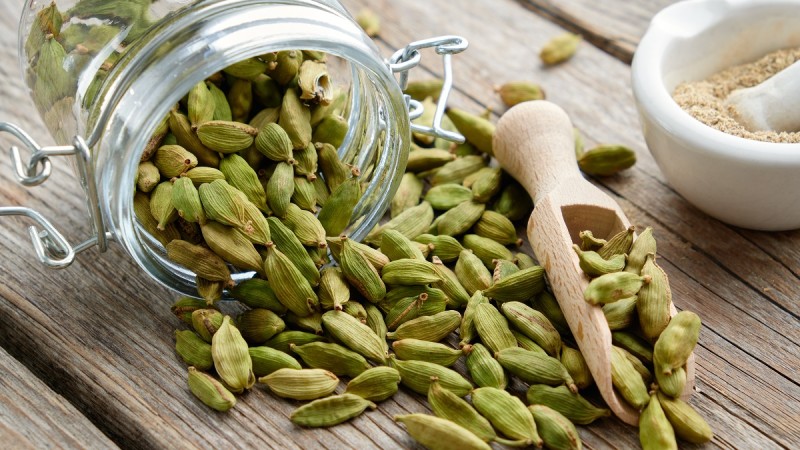Cardamom: a slightly bumpy ride in Europe
March 26, 2025 at 9:18 AM ,
Der AUDITOR

EU demand set to rise
Europe may only account for as little as 8% of global cardamom imports and sales may have dipped in recent years, yet interest in this expensive spice will grow as a CBI study showcases. Expectation is that demand will rise as Asian and Middle Eastern food is gaining in popularity due to Europe’s increasing multiculturalism. Vegan cooking is also on the rise with cardamom being a popular ingredient, in addition, cardamom is used in traditional recipes. Europe also exclusively relies on imports as it does not grow its own cardamom. While imports of whole cardamom, which account for around 74% of the total import volume, are subject to fluctuations, demand for crushed or ground cardamom is relatively stable.
Rise in imports not quite as straightforward
EU imports peaked at 2,738 mt in 2021 due to prices crashing down after surging to a record high in 2020 and belief in cardamom’s reputed health effects fuelled by Covid-19. Average EU import prices, in fact, surged to an unprecedented EUR 19.94/kg (USD 21.51/kg) in 2020 before slumping to EUR 15.88/kg (USD 17.13/kg) in 2021. Although prices declined sharply in the following two years with 2023 witnessing a low EUR 7.97/kg (USD 8.60/kg), the import volume did not grow due to the economic slowdown.
Yet, it should be noted that in terms of volume imports have flatlined above 1,960 mt in the last two years, which is a higher level than before the outbreak of the pandemic when imports only slowly climbed from 1,447 mt in 2012 to 1,707 mt in 2019. In 2024, EU spending also increased again to EUR 25 million (USD 27 million), which marks a stunning 59% upsurge on the 2023 import value of EUR 16 million (USD 17 million). This development has boosted confidence in the market potential for cardamom.
One top supplier
Guatemala is the EU’s most important supplier by far and has held an average market share of 86% in terms of volume in recent years. In the current season Guatemala is, however, left to deal with a sharp production decline due to thrips and early harvesting by growers wanting to profit from higher prices. This caused the country's share in the EU import market to decline to 85% in 2024. At 17,000-20,000 mt the country’s production ranges much lower than the normal annual average of 36,000 mt. This also partly explains why shipments to the EU were relatively flat in 2024.
India has mainly picked up the slack left by Guatemala as shipments to the EU recovered by an impressive 63% in 2024 as compared with 2023. Yet, the country only accounted for 6% of the EU’s total import volume last year. Imports from the UK, which supplies cardamom originating in India, also rose by 18%.
|
EU cardamom imports (kg) |
|||
|
Partner |
2023 |
2024 |
Diff. |
|
Guatemala |
1,671,492 |
1,663,350 |
-0.5% |
|
India |
71,473 |
117,160 |
63.2% |
|
UK |
43,359 |
51,353 |
18.4% |
|
Tanzania |
30,871 |
32,580 |
5.5% |
|
Vietnam |
20,807 |
25,988 |
24.9% |
|
Honduras |
75,374 |
18,657 |
-75.2% |
|
Turkey |
24,925 |
17,605 |
-29.4% |
|
Syria |
1,162 |
4,617 |
297.3% |
|
China |
4,198 |
4,321 |
2.9% |
|
UAE |
5,469 |
4,100 |
-25.0% |
|
Others |
21,854 |
23,500 |
7.5% |
|
Total |
1,970,984 |
1,963,231 |
-0.4% |
|
DG TAXUD Customs Surveillance, 01/01-31/12 |
|||
Netherlands and Germany as trading hubs
Within the EU the Netherlands accounted for 49% of the EU’s total imports. The Netherlands function as an important access point to the EU market. Not only do suppliers re-export whole cardamom but ground cardamom, processed within the Netherlands, also accounts for as much as 50% of exports according to CBI.
Germany acts as a spice hub and is next in line as 21% of the EU’s total imports were destined to here in 2024. The country is home to the biggest consumer market in Europe. Sustainable niche products thrive here with many spice companies handling organic cardamom.
Italy (7%), Sweden (6%) and Finland (6%) accounted for much smaller marker shares last year. Sweden is particularly interesting as cardamom has become a staple food here and the country’s per capita consumption ranges an estimated 18 times higher than in other countries.
View more
- price chart, green cardamom, India
- more price charts





